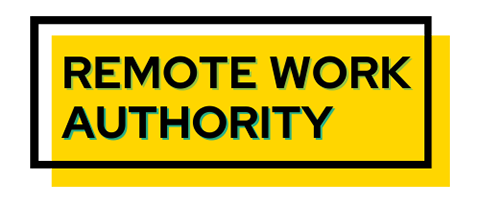As the nature of work changes, leaders must adapt, but they often lack the mindset and experience to embrace change. The move to remote work, the concern with work-life balance, the reality of an inclusive workforce, and the rise of AI pose new challenges that call for new leadership styles.
The world of work has changed drastically since COVID, as workplace trends brewing for years came to the surface and forced management to reconsider how things had always been done. Some leaders proved themselves adequate to the task of honestly evaluating policies and procedures to determine what was essential to doing the job and were able to strip away cumbersome, outmoded ways of viewing and doing work. Unfortunately, many did not.
As changes occur in the workplace, leaders often need training to embrace new leadership styles and understand how best to manage the current workforce that is more vocal about their wants and needs.
Current Trends That Challenge Leadership
Remote Work
Since the 70s, a small but growing percentage of workers did their jobs from home or other locations away from the office. When the pandemic hit, many office workers were told to stay home to contain the crisis; 4-6% of remote workers increased to over 50% between April and December 2020. Currently, about 12.7% work remotely, while 28.2% work with a hybrid model.
Displaced workers received minimal instruction on how to transition to home, but so did leaders. Some leadership skills are always relevant, but managers were usually physically present in the same space as their employees, making it easier to build teams, hold meetings, observe work patterns, and assess the team’s and individual’s needs and performance.
Trust was also an issue for bosses suggesting to remote workers. Their attempts to ensure employees were working often resulted in using time-tracking software and other measures to assess productivity.
Today’s leaders must manage a mix of onsite, hybrid, and remote employees who may be disgruntled at returning to the workplace, feel overworked upon their return, and bristle at attempts to micromanage them from afar.

Work-Life Balance
Employees who put in long hours on the job at the expense of their personal lives realized two things during the pandemic: they often neglected family and friends and subjected themselves to burnout. They wanted to keep flexible hours and the ability to work at home when companies issued RTO mandates to bring workers back to the office and then expected them to work long hours.
Workers wanted to keep the better balance they found. Those often resentful they had to come in resorted to quiet quitting and other signs that they didn’t want a return to the former status quo, which often led to disengagement and burnout.

Spurred on by Gen Zers in the work population, workers want mental health care and flexibility to prevent burnout.
Managers may want to be sensitive to worker needs yet need to figure out how to meet corporate goals.
Inclusiveness
Workers often excluded from the workforce, such as minorities and those with physical or mental disabilities, found employment opportunities before them if they wanted to continue after the pandemic. As they were often hired through virtual interviews, they presented their strengths and were hired for their talent, without physical and mental disabilities figuring into the equation. After COVID, they needed accommodations such as flexible hours and remote work – and are willing to sue for them.
Some minority workers preferred remote work as working away from the office reduced the level of microaggressions directed at them. Workers with caregiving responsibilities, particularly women, found that remote or hybrid work allowed them to better attend to kids and inform parents.

Managers need to confront the concerns of all workers, utilize their talents, and make them feel welcome no matter where they are physically located.
AI
Artificial intelligence promises to transform many office work functions, especially in marketing, sales, customer service, and finance. Jobs humans do may ultimately be more fulfilling, but some people may be displaced from their current positions in the short run. Employees may need “reskilling” to adapt to new roles while managers oversee the transformation.
New Leadership Styles Leaders Need To Manage The Current Workforce
Leaders at all levels of management need skills in technology, human relations, and visionary leadership.
Technical prowess:
- Embrace technology as a tool to improve communication, efficiency, and collaboration
- Be comfortable in making data-driven decisions
- Understand what AI can do in their workplace
Human Centricity
- Have empathy and emotional intelligence to understand what others need, build trust, and forge meaningful connections
- Include the concerns of all worker groups so that it is a safe space for them to work, express themselves, and contribute their talents
- Learn to communicate clearly, transparently, and authentically to voice expectations and build trust
- Develop performance-management techniques that are true indicators of productivity
- Become agile enough to embrace change, learn continuously, and adapt strategies when needed
Vision
- Anticipate the impact that AI, technology, and other trends will have on the workforce
- Encourage creativity and out-of-the-box thinking to meet new challenges
- Lead with courage and determination when workers may grapple with changes
Training Tools For New Leaders
Leaders often share the hopes and fears of their charges and may have similar difficulties embracing change and uncertainty. Depending on their own personality and training, some may be able to roll with the punches and develop the new skills they need. However, most need specific training on how to manage remote and hybrid work groups, incorporate change, and balance worker and company needs.
Fortunately, resources to help old leadership dogs to learn new tricks are readily available. While on the job, there is no time to stop and take a long time to retool.
Here are a few options to help leaders change their thinking and develop the remote leadership skills they need to function in the modern office.

1. HubSpot Academy’s Remote Leadership Training: How to Manage a Remote Team
In 36 minutes, leaders can expand their knowledge of remote teams and how to manage them. Topics include:
- Common challenges faced by remote workers
- Tools workers need to work from home
- Tips for creating a virtual office for a remote team
This free Hubspot course on managing remote teams can be an excellent way to jumpstart usable knowledge.
2. Udemy’s Managing Virtual Teams
Comprised of 11 sessions that total one hour and 15 minutes, the Udemy remote leadership course offers:
- Insights on characteristics, dynamics, and challenges of teams
- Making remote meetings productive
- Incorporating the culture and expectations of different worker groups in virtual teams
- Using and applying different communication models
- Putting new ideas for virtual teams into practice
- Proactively using technology for team manager
3. Coursera’s How to Manage a Remote Team
In 11 hours, this course from Coursera will build upon basic knowledge and teach managers to:
- Lead in a remote environment
- Build a remote organizational culture and develop practices to make it work
- Assess team and manager readiness for remote work
- Create a foundational strategy for executing the change to remote work
4. eCornell’s Leading Remote Teams Certificate Program
eCornell offers a three-month program comprised of two-week courses that are well worth it for leaders to have under their belt. The sections include:
Strategies to evaluate the performance of virtual teams
- Building a foundation of trust, team identity, and engagement to propel teams forward, reach goals, and avoid remedial action for not meeting goals
- Best practices for effectively managing conflict, communication, and collaboration for virtual teams
- How to create more focused, result=driven teams
- Managing cross-cultural differences in teams
None of the courses listed above avoid an academic approach to remote management. Instead, the focus is on imparting skills leaders will need to quickly and effectively.


